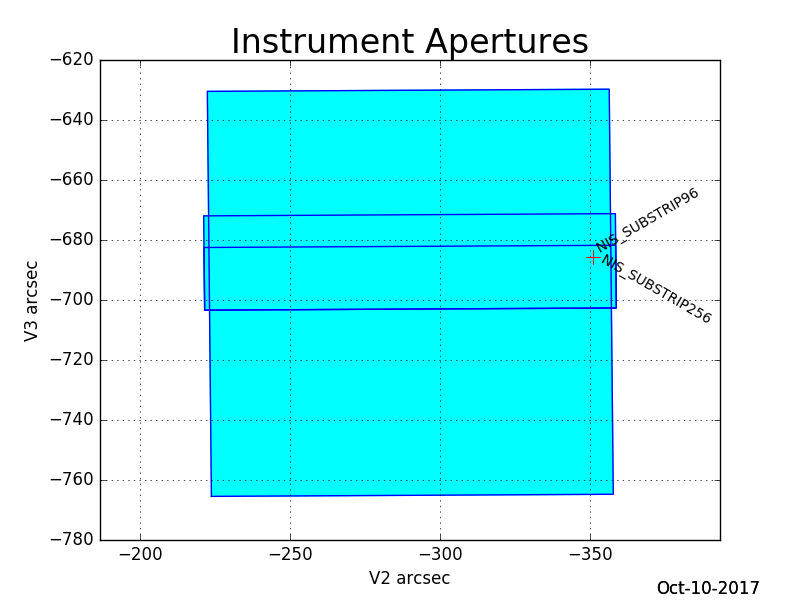NIRISS Apertures
JWST NIRISS apertures define target reference positions and nominal extent in the field of view for all observations.
See also: JWST Instrument Ideal Coordinated Systems, JWST Observatory Coordinate System and Field of Regard, NIRISS Detector Subarrays
Apertures define targetable areas and their extents in the JWST field of view. Each aperture has a reference position to coincide with the observed target as well as outer bounding coordinates defining the nominal sky coverage of each observation. These definitions are stored in the Science Instrument Aperture File (SIAF).
The coordinates of NIRISS apertures used for science observations are shown in Figure 1. They may change slightly depending on the outcome of calibration measurements obtained in flight.
All NIRISS apertures are nearly aligned (to within ~0.5° of rotation) with both the JWST focal plane coordinate system (V2, V3) and all detector rows and columns.
Words in bold are GUI menus/
panels or data software packages;
bold italics are buttons in GUI
tools or package parameters.

